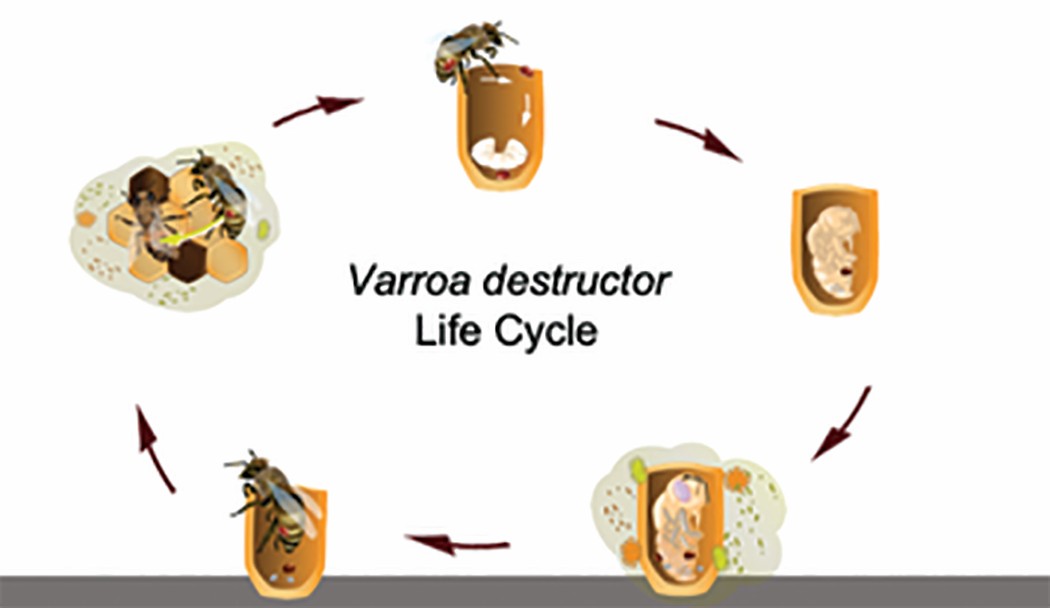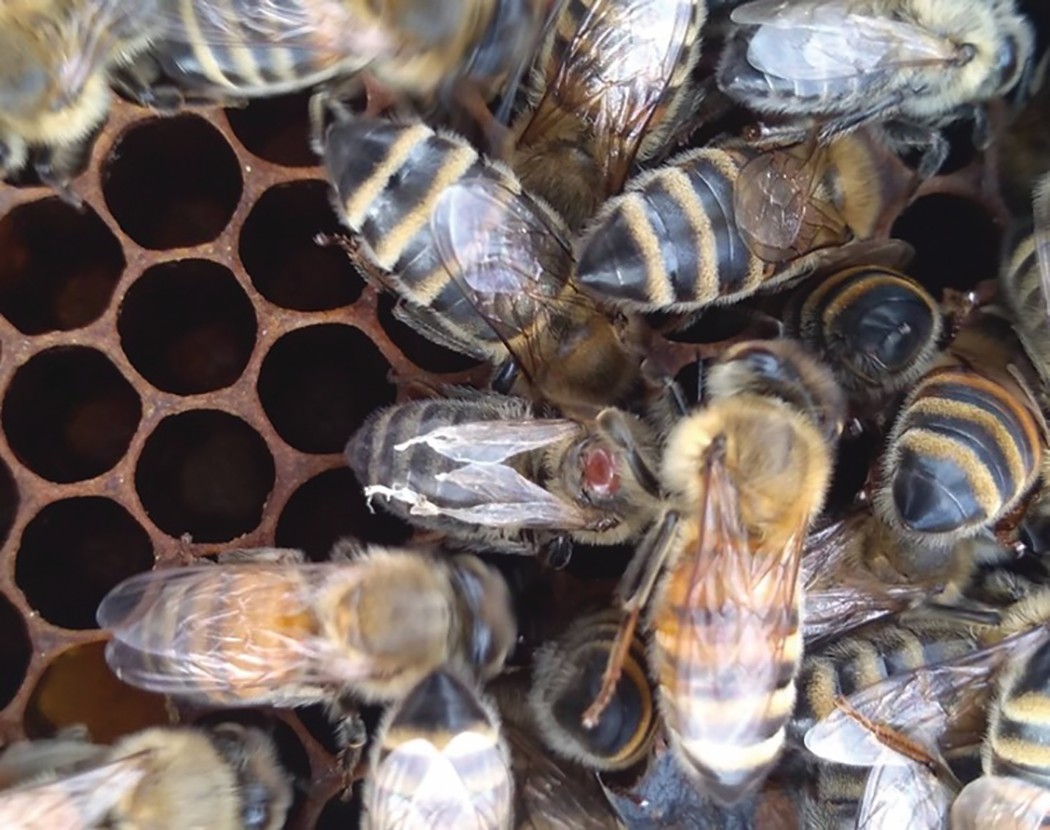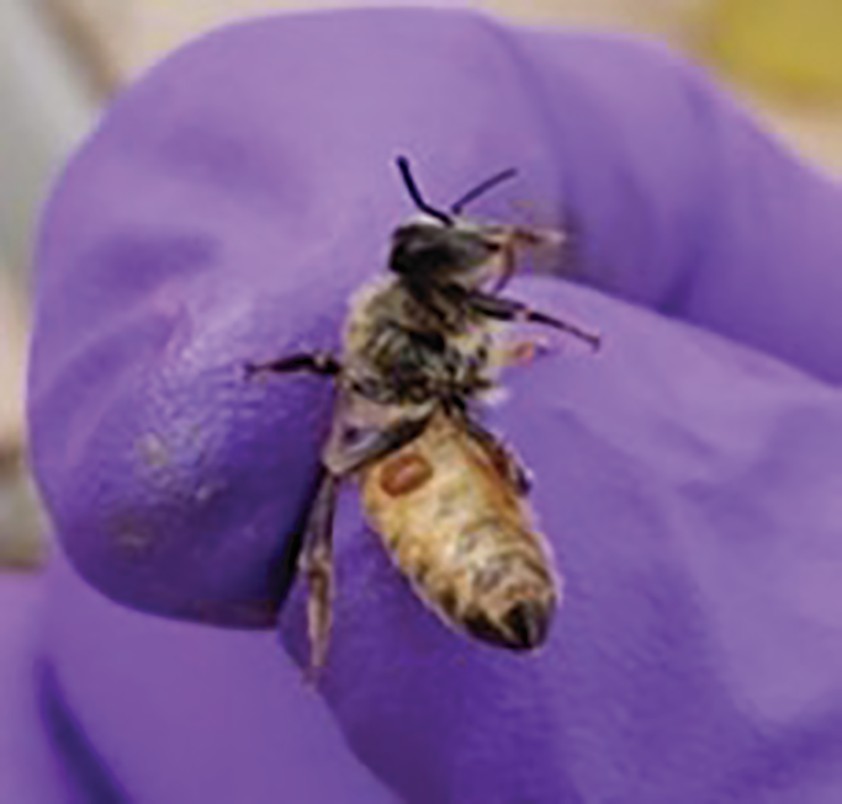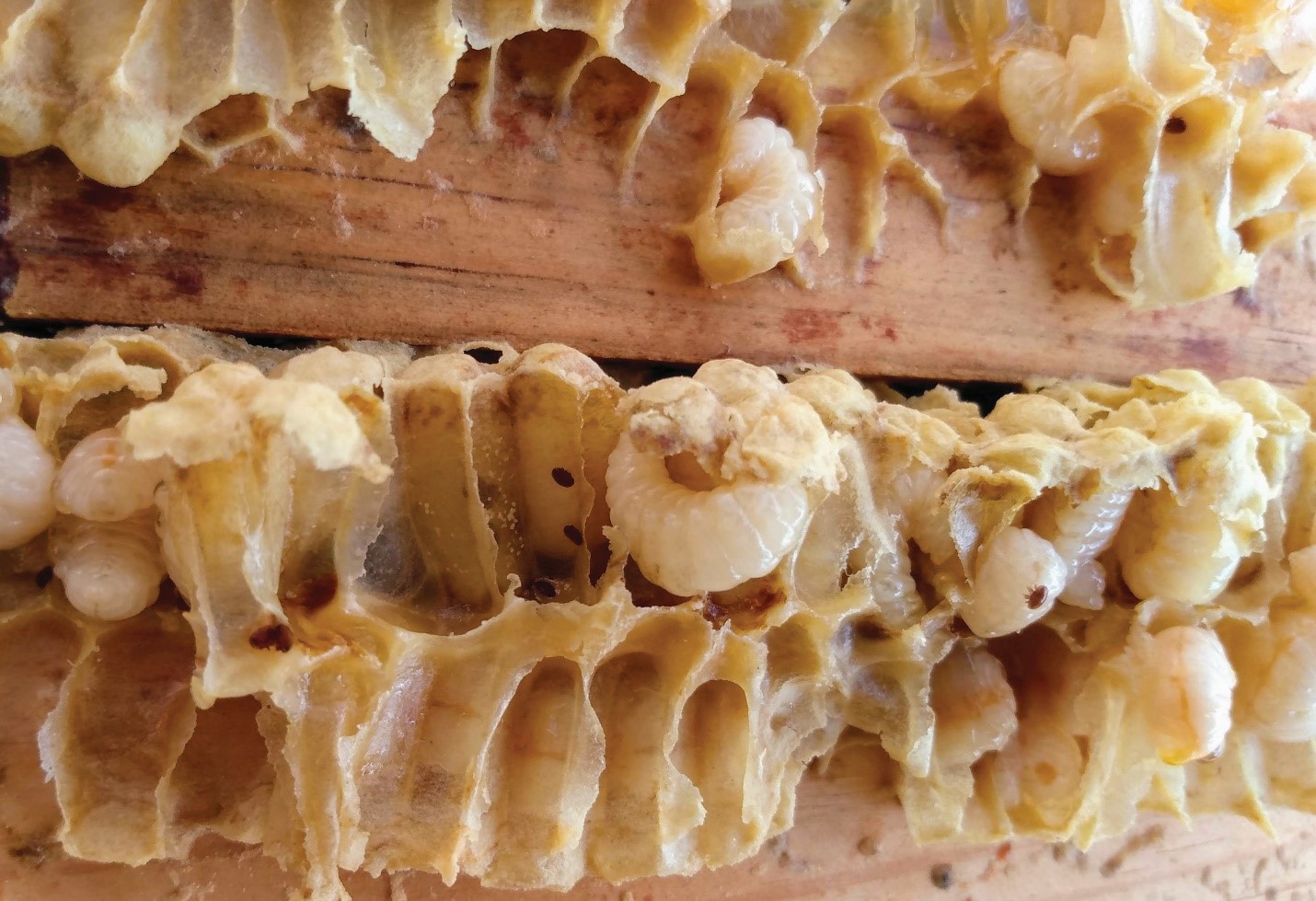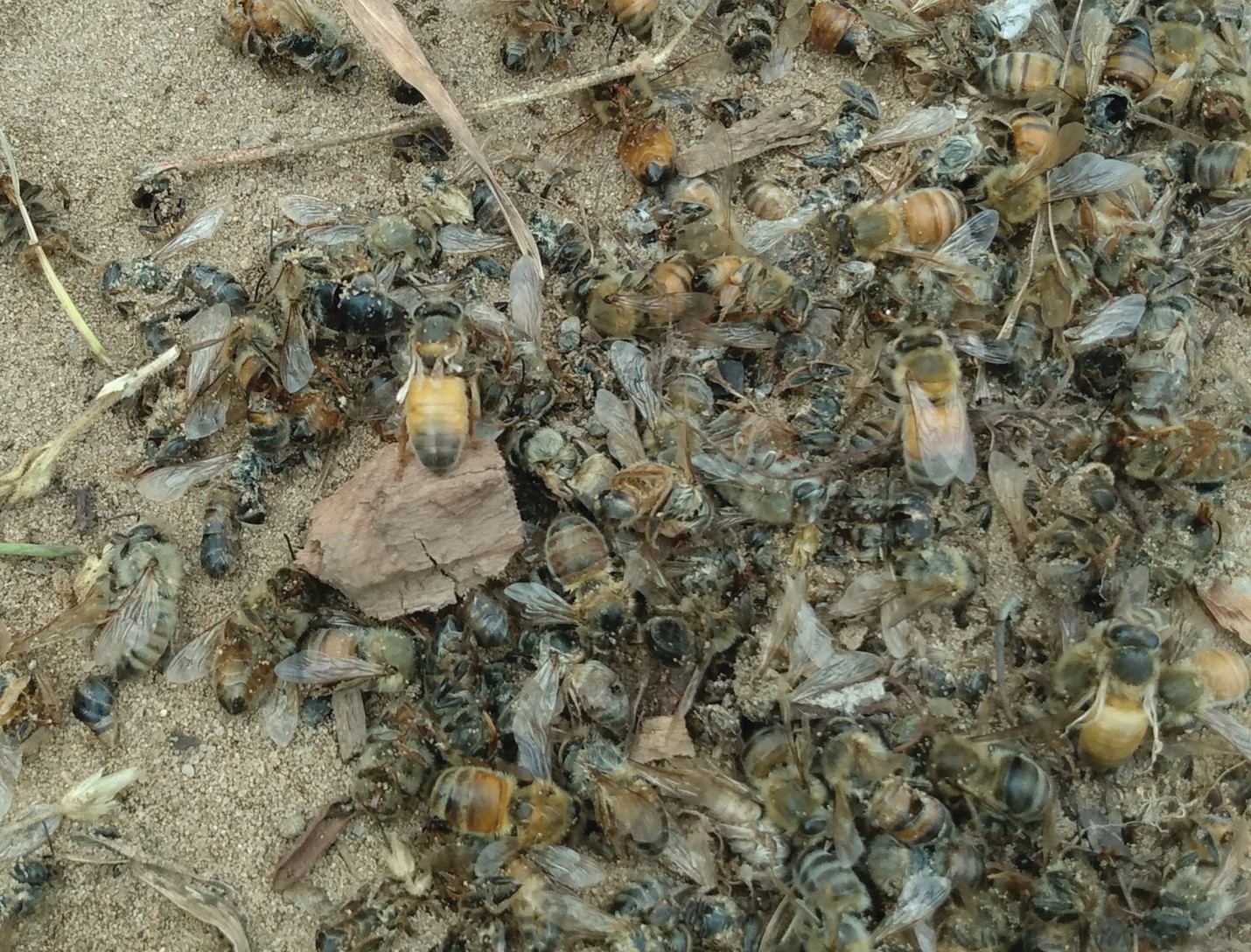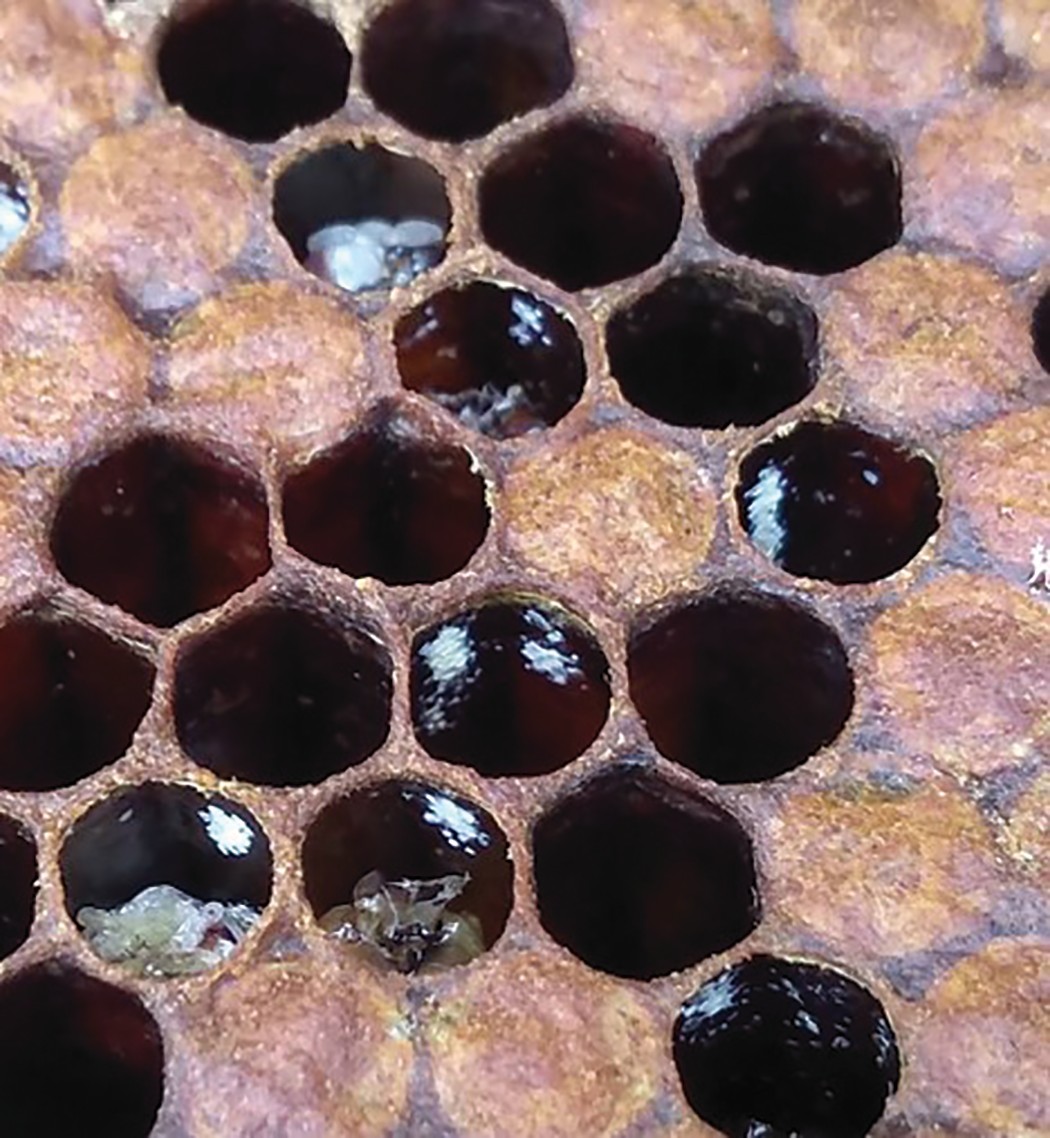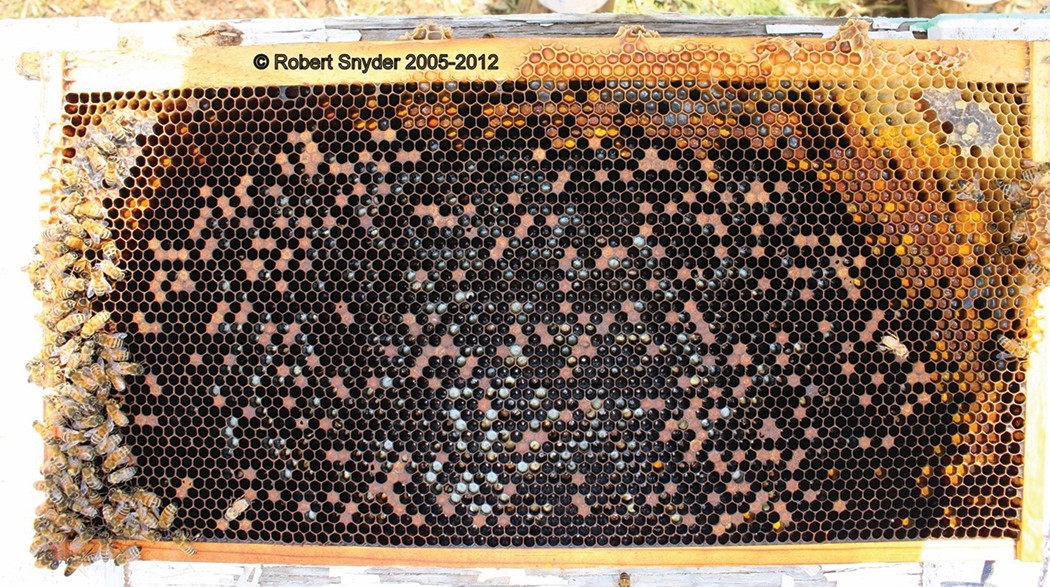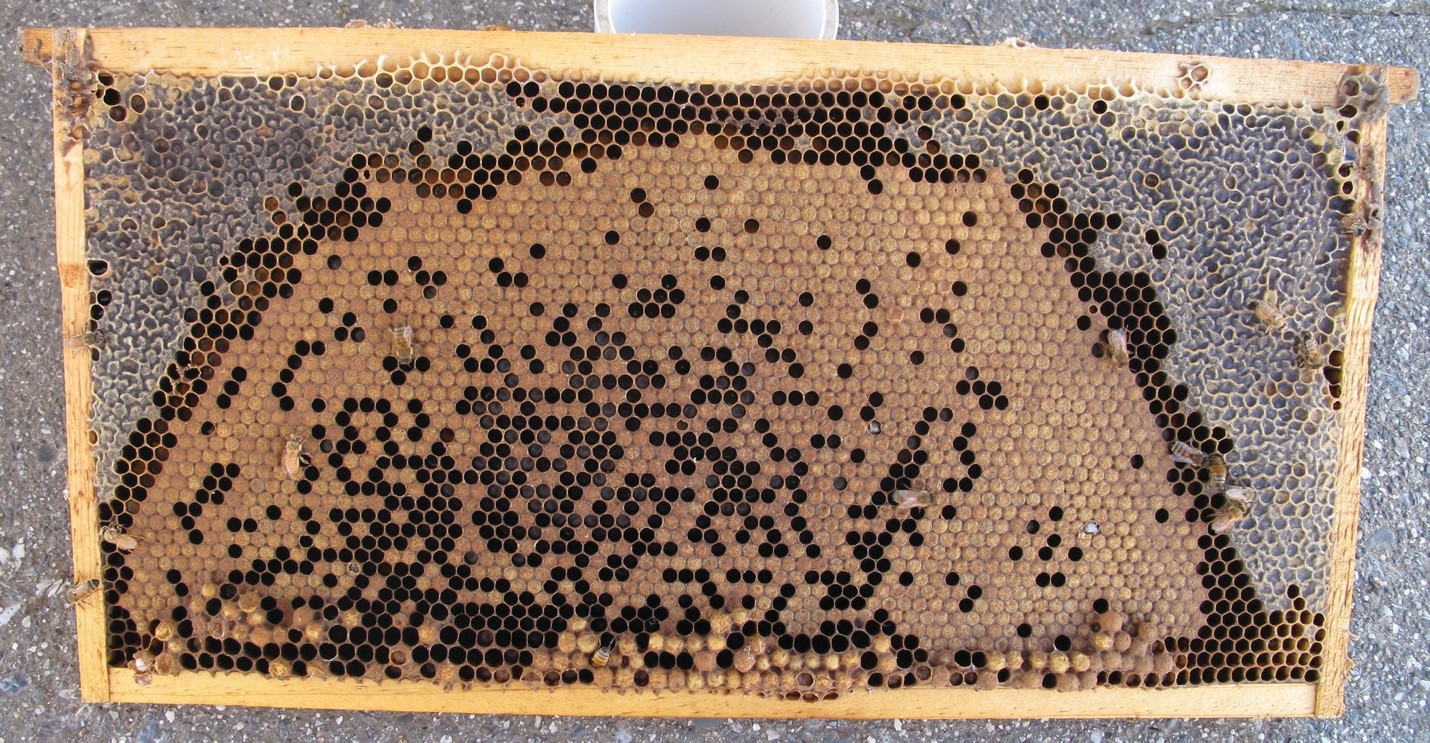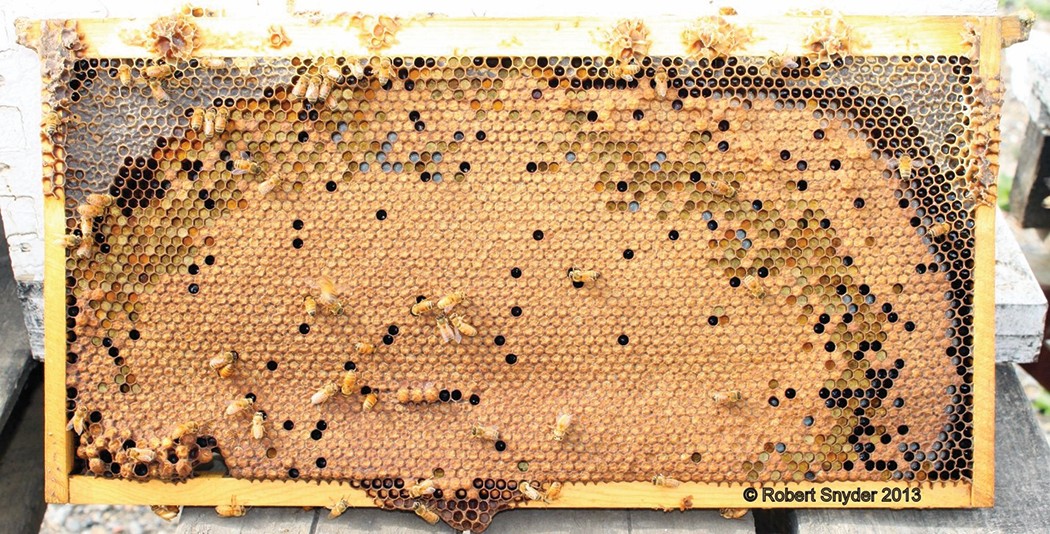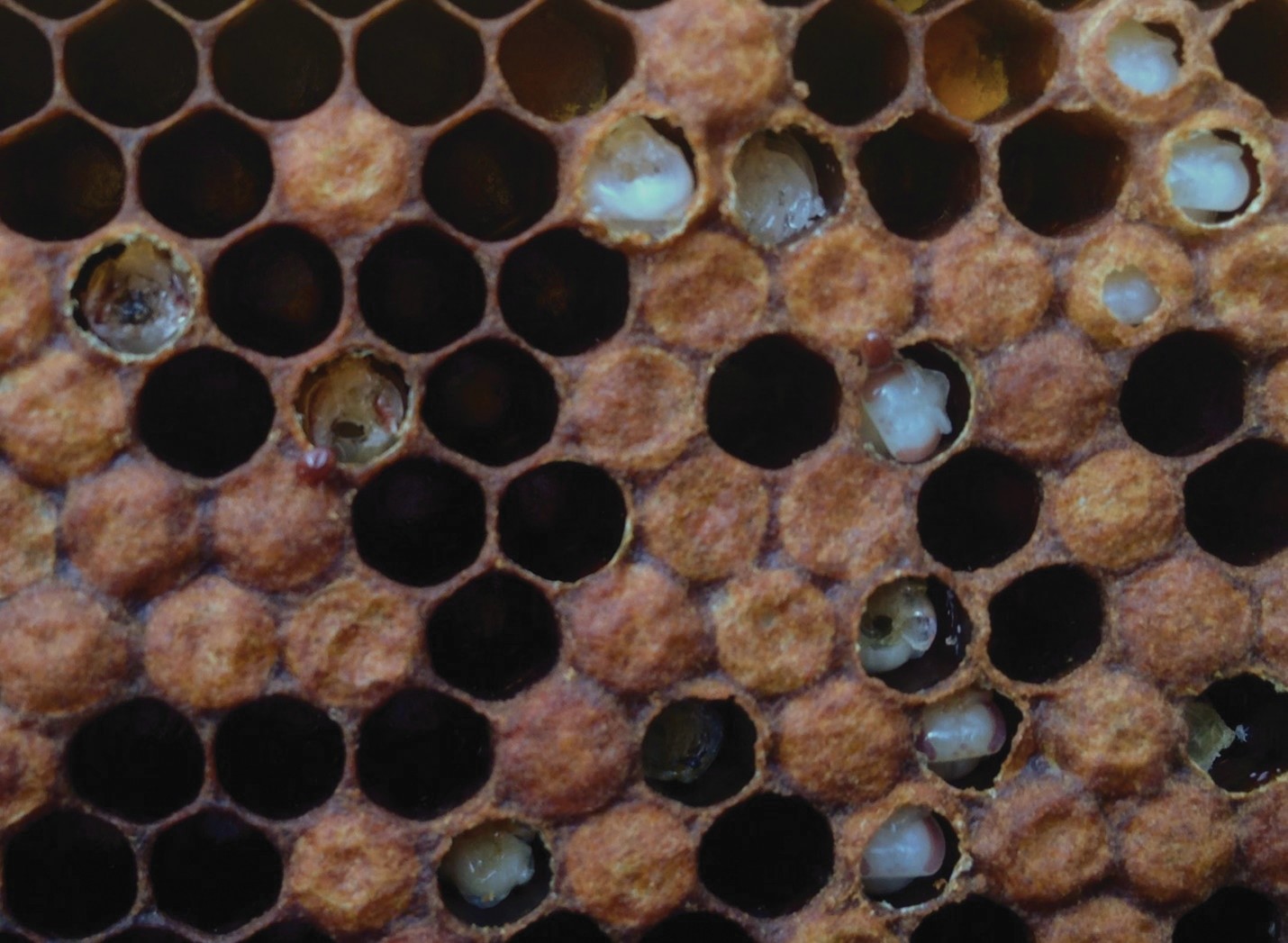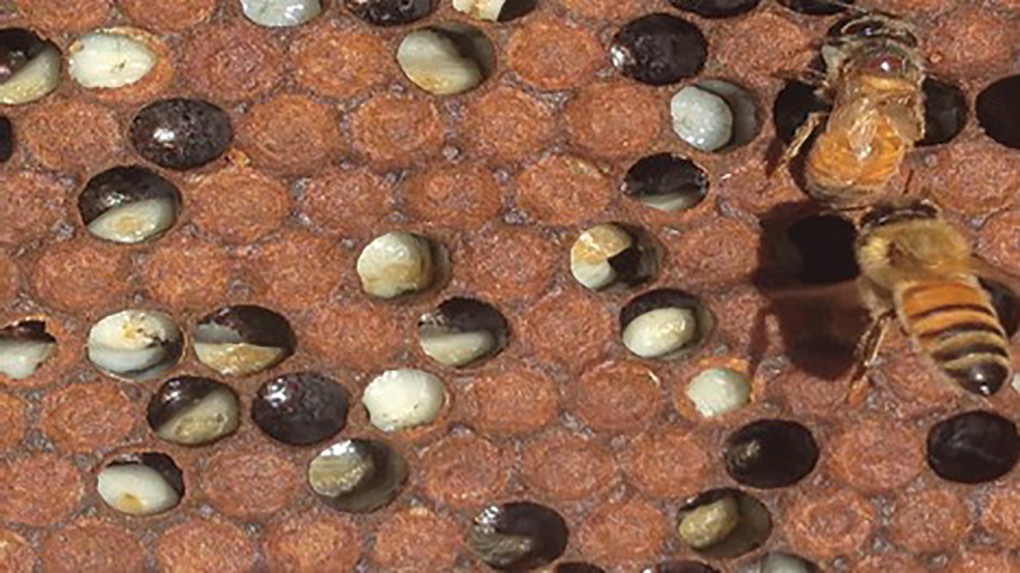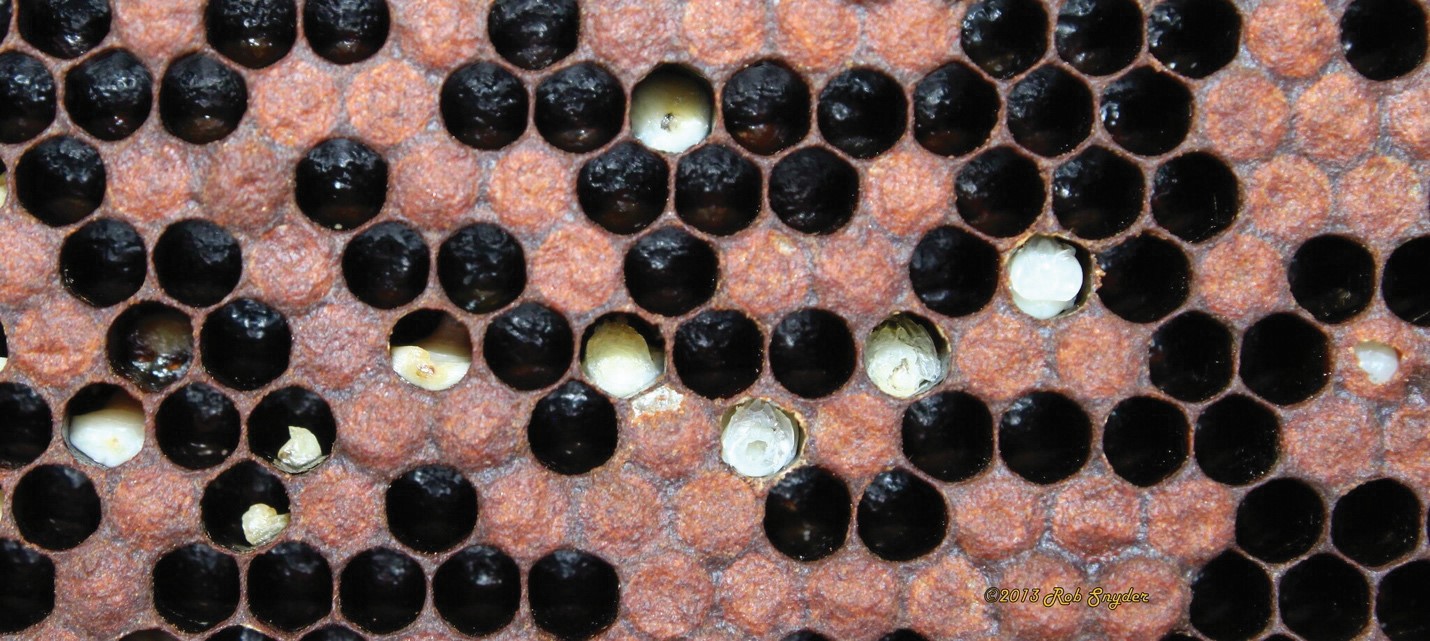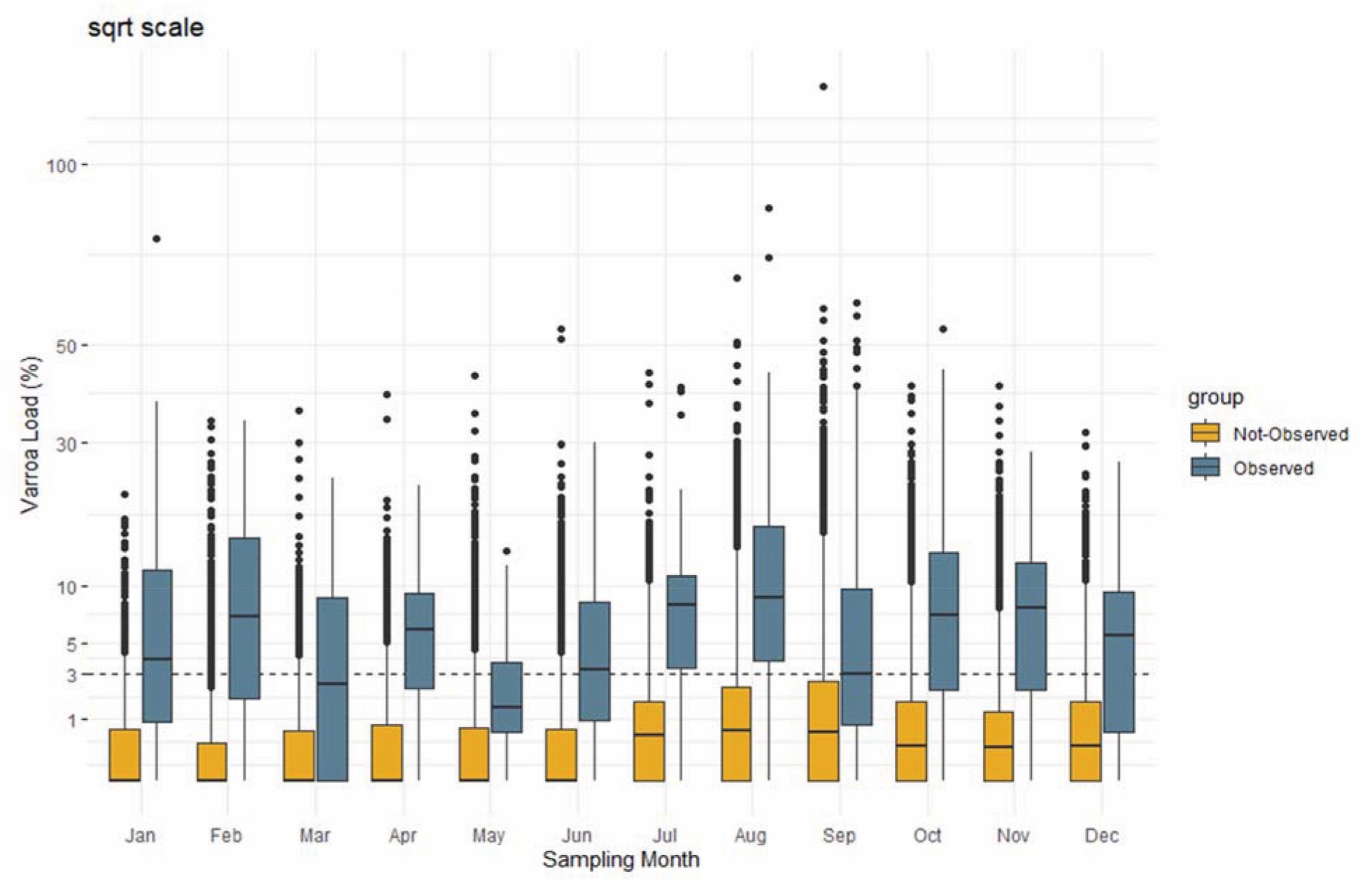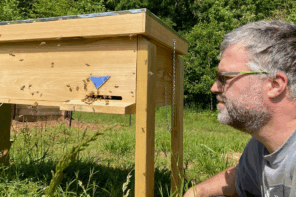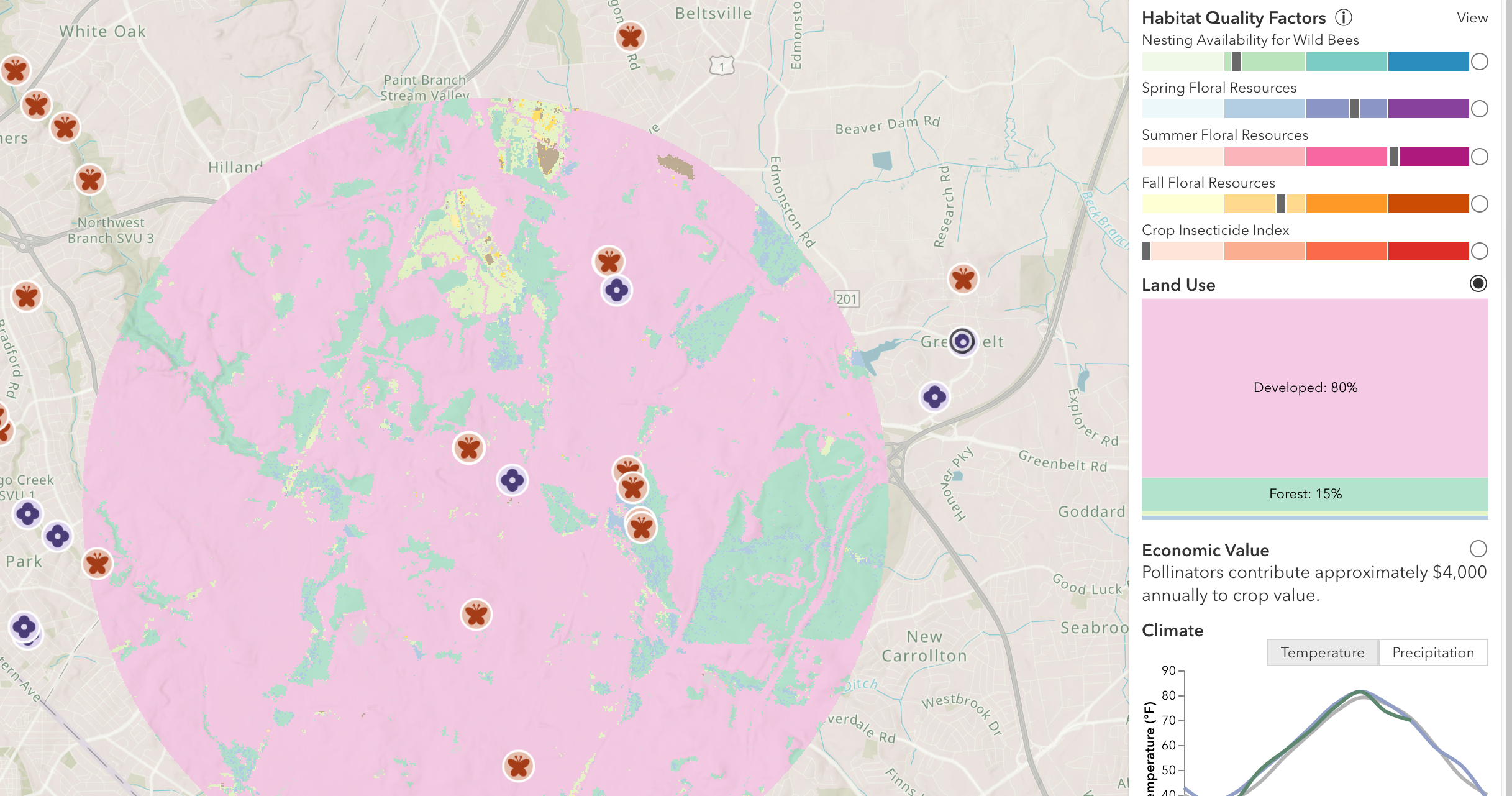Anne Marie Fauvel & Dan Wyns
Looking For Signs of Varroa Mites
August is Varroa month at Bee Informed Partnership (BIP). The BIP Field Specialists collectively inspect and sample close to 10,000 colonies across the country each year. This month, the Field Specialists will be busy sampling colonies in commercial operations at the tail end of the honey flow, and before fall Varroa treatments. This visit is meant to assess general colony health and Varroa loads before treatment, which will in turn, be the baseline needed to evaluate the efficacy of the subsequent interventions. One of the most important lessons I have learned in my late Summer trips accompanying the Field Specialists, is how to recognize signs of mite pressure without actually seeing mites themselves.
A brief review of the Varroa life cycle helps to explain some of the visual indicators of growing mite pressure. A mature Varroa female mite, called the foundress, enters a worker or drone larval cell just before capping. Once the capping is in place, the foundress will attach to the larva, feed on its fat body (Ramsey et al., 2018) and starts to reproduce. The first egg she lays is a male, and all the subsequent eggs laid every few days will develop into female mites. The newborn sisters will mate with their brother and mature into new fertile Varroa mites, ready to repeat the process as foundresses themselves. There are therefore two distinct phases for Varroa, the time they spend under the capping in the brood and the transit period they spend on adult bees in the colony. This means that for every mite on an adult bee, many more can be found in the brood under the cappings.
The More Evident Signs of Varroa Presence
Visual Identification of Varroa on Adult Bees
I have met many beekeepers that rely on visual identification of Varroa mites on adult bees as a way to monitor. Although it is true that some mites may be found on the dorsal side (top) of a worker bee’s thorax, this usually happens to a noticeable degree in the very advanced stages of mite infestation, when mites are ready to hitch a ride out of the colony to go infest other colonies. Contrary to popular belief, the most prevalent location of mites on adult bees, is found on the ventral side (bottom) of the bee’s abdomen, between overlapping abdominal plates (Ramsey et al. 2018). On my first sampling trips a few years ago, I observed Field Specialists picking up worker bees by the base of their wings to look at their underbelly. I had never seen anyone do this during a colony inspection before, but I now routinely pick up bees to look at their abdomen as one of the signs of Varroa presence.
Drone brood inspection
Developing drones take a few extra days under the capping, which give the Varroa foundress the advantage of more progeny reaching maturity. For this reason, drone brood is often a good place to find mites. Drone brood is often exposed when breaking up two brood boxes for inspection and it is good practice to carefully examine any drone cells that are torn open while carrying out routine colony inspection.
Finding mites on adult bee abdomens and in drone brood is interesting and useful information in the big Varroa picture, it tells you that you have mites, which is not very surprising. What it doesn’t tell you is how many mites you have. It is important to quantify the infestation level by performing a tried and true monitoring technique. The BIP Field Specialists use alcohol washes exclusively and our data shows that we recover over 95% of mites with this method in the field compared to the standard laboratory methods.
Deformed Wing Virus (DWV)
Varroa destructor itself is detrimental to honey bees, but more importantly, the viruses they transmit are by far more damaging to overall colony health. Unfortunately, most viruses are not associated with any discernable visual signs, and without a molecular analysis of bees, it is difficult to diagnose presence and severity of viral infections. There are a few exceptions, including the more obvious Deformed Wing Virus (DWV) and its variants leaving bees with non-functional atrophied wings in the late stages of infection. DWV has been shown to be transmitted from Varroa mites and horizontally, from bee to bee through feeding and cannibalism (Posada-Florez et al. 2021).
Seeing a significant number of bees with deformed wings in a colony is a likely indication that the colony has been suffering from high mite pressure for a sustained period. When this is observed late in the season it is often an indication that the colony has a slim chance of recovering and surviving the winter even if the mite infestation is controlled effectively and quickly.
Mite Frass
When Varroa feeds on pupae under the capping, they produce an excretory by-product which dries up to leave a crystal-like deposit on the roof of the cell. These deposits can be easily spotted when a frame is angled to reveal the upper portion of the cells. The presence of mite frass indicates mites have been present in those cells.
The More Subtle Signs of Varroa Presence and Damage (in brood)
Brood Pattern Quality
One measure of colony health is the quality of a colony’s brood pattern. BIP Field Specialists and sentinel participants are asked to record brood pattern on a scale of 1 to 5, 1 being the poorest (most spotty) and 5 the best (most solid). A brood pattern consistently (on multiple frames) below a 3 may indicate a great many things, including queen failure or potential diseases including advanced stages of Varroa infestation. Therefore, a patchy brood pattern is often the first clue that something is not quite right in the colony and a solid invitation to look further down into the cells to hunt for other clues.
Often, the empty cells in a brood pattern are a result of the honey bees’ hygienic behaviors. Some colonies strongly exhibit the hygienic trait that allows them to detect maladies, including mites under the cap. By detecting Varroa and removing the infested pupa the Varroa reproductive success is diminished. Hygienic behavior may therefore result in a somewhat more open pattern but can be overall beneficial in slowing the Varroa population growth within the colony. This is the reason why a score of 4 on a brood pattern can be good news.
Chewed Down Brood
Too often, bees cannot keep up with the Varroa population growth in the colony. As the Varroa infestation level rises in the colony, so does the visual evidence of the hygienic behavior response and the brood pattern score plummets as bees try in vain to rid themselves of the parasites by removing and increasing percentage of developing pupae. Bees start this process by poking a hole in the pupal cap, which halts the bee development and stops the mite’s reproductive cycle. Furthermore, honey bees will continue the opening of the cap process and remove the pupae, often by chewing it in pieces, a phenomenon we describe as Chewed Down Brood (CDB).
Melted Down Larvae
As honey bees continue to work overtime to clean up mite infested cells and the number of emerging bees declines, there is a lack of healthy nurse bees to care for the new up coming brood. Larvae are not fed and cared for properly and this leads to premature larval death. As they decompose they often dry and flatten into blobs on the floor of the cells we call ‘melted down larvae’.
Caution
After my first few trips with the Field Specialists, I started seeing all these signs of diseases in my own colonies and got myself in quite a panic. In subsequent trips, I tempered my zealous findings and learned two important lessons: 1) Each of these signs of Varroa damage in isolation may mean something different or nothing at all. For example, a score of 2 on a brood pattern may point to a declining queen or nutritional stress. Melted Down Larvae may be a sign of European Foulbrood. 2) The intensity with which these signs present themselves is a better indicator of infestation levels. For example, a few chewed down pupae may be the signs of a good hygienic colony. Our Field Specialists quantify their observations such as 0-5 cells (per side of a brood frame) is considered low, 6-20 cells is moderate and 20 + cells is a sign of severe infestation.
Parasitic Mite Syndrome (PMS)
According to the Oxford dictionary, a syndrome is defined as a group of signs/symptoms which consistently occur together. Parasitic mite syndrome (PMS) would then be used to describe a colony that displays three or more signs described above. For example, if I see mites on adult bee abdomens, some bees with deformed wings along with a score of 2.5 brood pattern, some chewed down brood and a few melted down larvae, I would feel confident in stating that my colony has PMS. This syndrome is an indicator of long-term impact of Varroa infestation and the associated viruses they transmit and usually occurs after months of Varroa pressure without successful intervention. For this reason, PMS tends to be more prevalent in the Fall.
Summary
Learning to recognize some of these signs of Varroa mite pressure and damage should help supplement your monitoring efforts. If you miss some of the early signs and are seeing the indicators of more advanced infestations, intervening will not necessarily save the colony, as too much damage may have already occurred. However, intervening, even at a late stage has two extremely useful purposes. The first is to take action to prevent spreading all these Varroa mites to other colonies as it collapses. And second, is that it will enforce the need for more vigilant monitoring and intervention in subsequent years.
References
Posada-Florez, F., Lamas, Z.S., Hawthorne, D.J. et al. Pupal cannibalism by worker honey bees contributes to the spread of deformed wing virus. Sci Rep 11, 8989 (2021). https://doi.org/10.1038/s41598-021-88649-y
Ramsey, S., Gulbronson, C., Mowery, J., Ochoa, R., VanEngelsdorp, D., & Bauchan, G. (2018). A Multi-Microscopy Approach to Discover the Feeding Site and Host Tissue Consumed by Varroa destructor on Host Honey Bees. Microscopy and Microanalysis, 24(S1), 1258-1259. doi:10.1017/S1431927618006773





